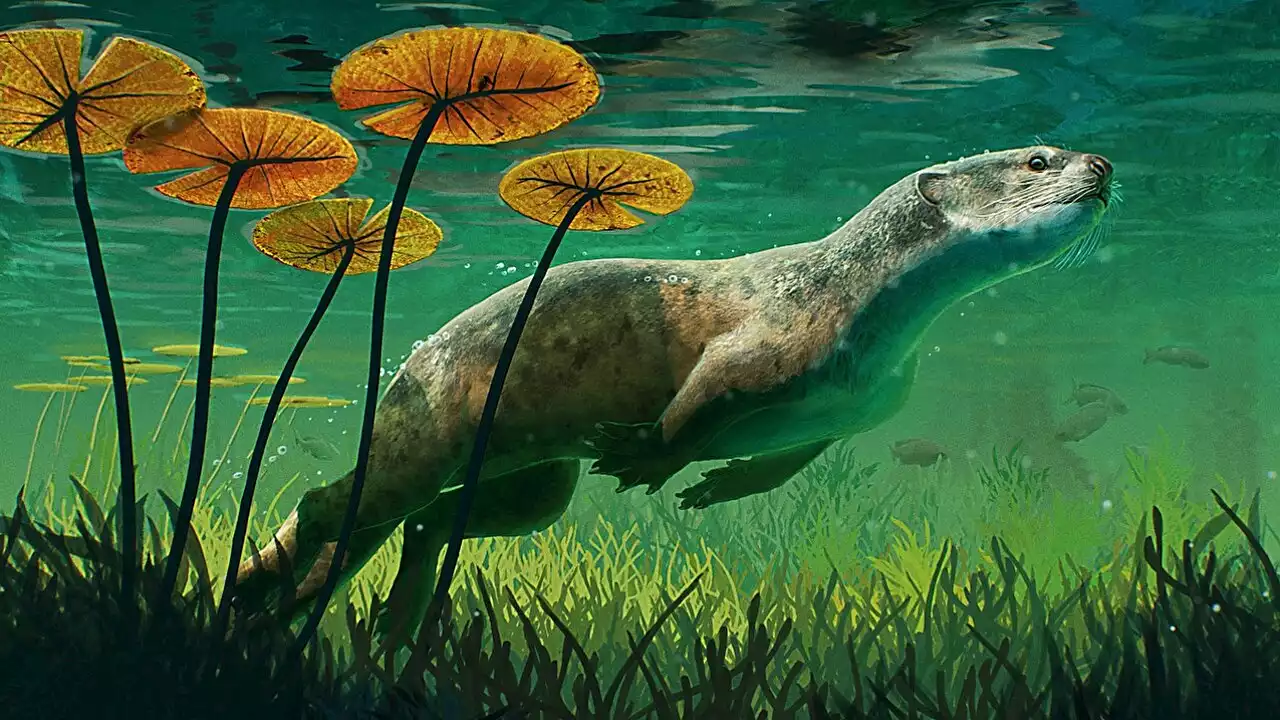An ancient relative of modern seals—known as Potamotherium valletoni—that had an otter-like appearance and lived over 23 million years ago likely used its whiskers to forage for food and explore underwater environments, according to a new study in Communications Biology. The findings provide further insight into how ancient seals transitioned from life on land to life underwater.
to locate food by sensing vibrations in the water, ancient seal relatives mostly lived on land or in freshwater environments. Some species used their forelimbs to explore their surroundings. Prior to this study, it was unclear when seals and their relatives began using their whiskers to forage.
Alexandra van der Geer and colleagues investigated the evolution of whisker-foraging behaviors in seals by comparing the brain structures of Potamotherium with those of six extinct and 31 living meat-eating mammals, including mustelids, bears, and seal relatives. Brain structures were inferred from casts taken from the inside of skulls.
The authors compared the size and structure of a brain region known as the coronal gyrus, which previous research has suggested is involved in processing signals from whiskers. They found that Potamotherium had a larger coronal gyrus than ancient and living land-based mammals that use their forelimbs to forage , but a similar sized coronal gyrus to other ancient seal relatives and semiaquatic mammals, such as the Eurasian otter, that use their whiskers to explore their surroundings. This indicates that Potamotherium may have used its whiskers when foraging, potentially in combination with its forelimbs.
The findings suggest that whisker-based foraging was already present in ancient seal relatives before they transitioned to a fully aquatic lifestyle. The authors propose that the use of whiskers may have helped them adapt to underwater foraging.George A. Lyras et al, Fossil brains provide evidence of underwater feeding in early seals,
Australia Latest News, Australia Headlines
Similar News:You can also read news stories similar to this one that we have collected from other news sources.
 Molecular Biology News -- ScienceDailyMolecular biology. Read the latest research on molecular biology or search thousands of news articles with images from leading universities and research institutes.
Molecular Biology News -- ScienceDailyMolecular biology. Read the latest research on molecular biology or search thousands of news articles with images from leading universities and research institutes.
Read more »
Biology | U.S. Geological SurveyThe USGS is sought out by thousands of partners and stakeholders across the country for our expertise in earth and biological science that supports public resources in wild and urban spaces, and all landscapes in-between.
Read more »
 Human Biology News -- ScienceDailyRead the latest research on human biology. Learn about comparative biology and human genetics.
Human Biology News -- ScienceDailyRead the latest research on human biology. Learn about comparative biology and human genetics.
Read more »
 Cell Biology News -- ScienceDailyCell biology news. Read the latest research news on cell biology and see related videos.
Cell Biology News -- ScienceDailyCell biology news. Read the latest research news on cell biology and see related videos.
Read more »
 Marine Biology News -- ScienceDailyMarine Biology News. Read scientific research on marine animals and their aquatic habitats. From plankton to whales, you will find it all here.
Marine Biology News -- ScienceDailyMarine Biology News. Read scientific research on marine animals and their aquatic habitats. From plankton to whales, you will find it all here.
Read more »
